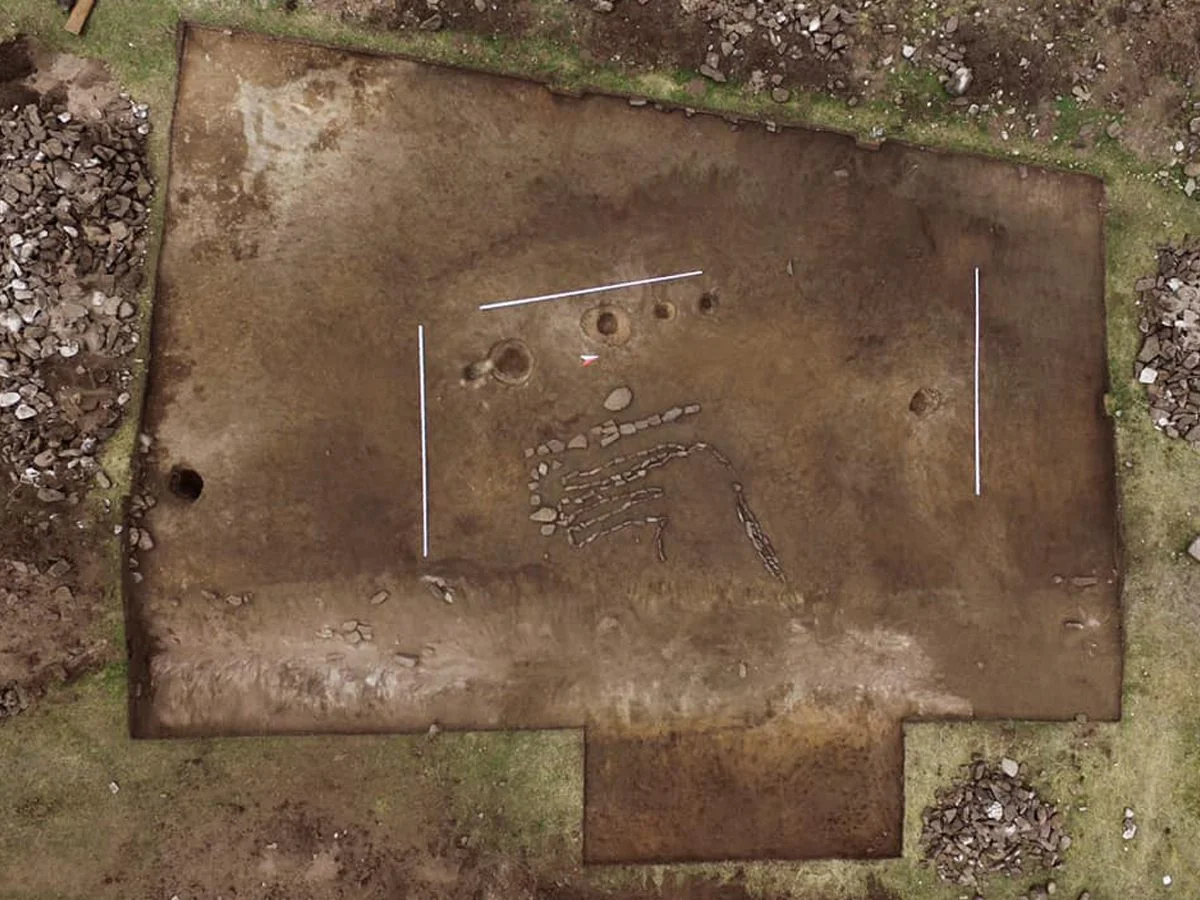Archaeologists from the Institute of History of Material Culture of the Russian Academy of Sciences (IIMK RAS), and LLC Krasnoyarsk Geoarchaeology have discovered a geoglyph depicting a bull during excavations in Southern Siberia.
The geoglyph was unearthed near the village of Khondergey in the south-west of the Republic of Tuva, close to Russia’s border with Mongolia, and represents the first such discovery in the region and Central Asia.
Archaeologists stated that the discovery was found as part of a wider burial from the Early Bronze Age, dating from more than 4,000 years ago, evidenced by ceramics in situ from that period. Measuring 3 by 4 metres, the bull is depicted by carefully placed pebbles and stone made from locally sourced sandstone.
The geoglyph has only partially survived due to road construction in the 1940’s destroying the head and torso, leaving only the backside of the bull with the hind legs and a tail.

Marina Kilunovskaya, Head of the Tuvan archaeological expedition, senior researcher of the Department of Archaeology of Central Asia and the Caucasus of IIMK RAS said: ′′The bull geoglyph has characteristics of Central Asian cultures in the era of the Early Bronze Age. We find bulls in petroglyph groups in Tuva and the surrounding areas, but a geoglyph in the form of an animal figure is a unique phenomenon, perhaps even for the Central Asia region in general.”
Kilunovskaya added: Although we can recognise the bull depiction, allowing us to reconstruct the lost parts with a high degree of probability, we have never seen stone layouts such as these before. In our opinion, the uniqueness of the find and the threat to the site due to the adjacent road requires further preservation.”
Institute for the History of Material Culture of the Russian Academy of Sciences





